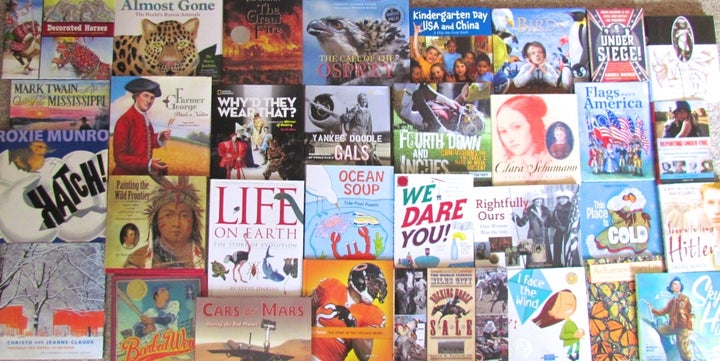Today’s classrooms are clouded with fear that has been blamed on the excessive and obsessive value put on standardized test performance, coming up soon. The focus has been put on deadly “skill and drill” test prep, which means reading material, usually from textbooks or from previous tests, and answering packaged questions; thus following the formatting of the actual tests. But the excerpts on the tests are often very different from standardized textbook reading because they are written by authors who have voices and points of view and passions of their own. How do I know this? Because many of my books, which hardly ever get into classrooms, are frequently excerpted for the tests. I just licensed the rights to a book I wrote long ago to a state education department that will be read by 100,000 students. They paid me well for my two little paragraphs; the fee was based on the number of readers. In one test, more kids will read my work than ever read the book it came from.

Even if these are for kids, adults would learn a great deal from reading them.
Private schools, who don’t worry about assessment tests, use interesting nonfiction books, like the ones in the picture, in their classrooms, so kids read both widely and deeply on subjects that are new to them and on subjects that interest them. But too many teachers don’t use the hundreds of books like these in the library that are not only informative but are actually engaging and fun to read.
This was the problem I addressed in 2009 when I founded iNK ( Interesting Nonfiction for Kids) Think Tank as an organization of award-winning children’s nonfiction authors. Our mission is to expand the use of nonfiction literature in the classroom, which, by the way, is becoming more popular in bookstores and I thought was the original intent of the Common Core. To this end, we created a free database on our website that generates lists of books that are appropriate for all curriculum areas and grade levels. Librarians know about us and our books and use the database. But often teachers are too worried about straying from the pacing schedule to cover the curriculum or too harried to explore using our books for their students. In some schools they may not even have the autonomy to do so. Librarians tell me that they ask teachers if they can pull books for them on the topics they’re teaching, but it doesn’t happen enough. Yes, there are studies that shows the benefits. Yet, for the most part, the classroom door is closed to us.
Could there be a way for us authors to get a foot in that door and give kids reading that gets them talking? How about creating a blog, written by dozens of iNK members, edited by Jean Reynolds, former publisher and terrific editor? What if it were free on the web and not password protected? And let’s include an audio file so less fluent readers have access to the content and readers get to hear the author reading his or her own work.
The Nonfiction Minute was launched in September of 2014. It was a labor of love. No one was paid. It was mentioned in the online version of School Library Journal when we republished it in 2015. We left up our archives this past summer and they are still up so teachers can select Minutes on an ad hoc basis. This year we are publishing random and sometimes date sensitive links to 5 Minutes for the upcoming week for those teachers who like variety and advance notice. Interestingly, the Nonfiction Minutes are about the same length as the assessment test readings. So when a teacher once asked me how she could justify the instructional time she spent with the Minutes, I told her, “Call it ‘test prep.’” Of course, it is our hope that this little taste of great writing will send kids to the library to read books.
The results? The first year we had 300,000 page views and 90,000 unique visitors. As of today, we’ve had more than 2,000,000 page views and 150,000 unique visitors. And we’re increasing those number by about 40% a year.
Of course, I contributed to the work. In case you’re wondering how I write for kids, here’s one of my Minutes: How to Extinguish a Fire with a Bag of Potato Chips. Thought you’d never ask!
